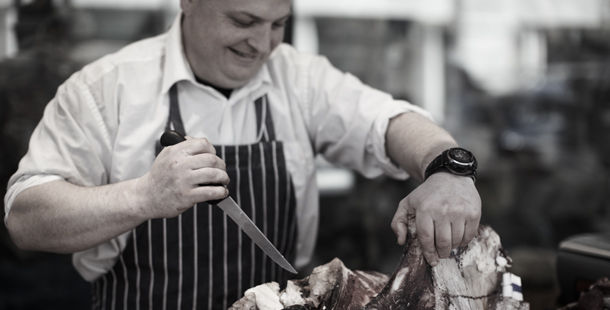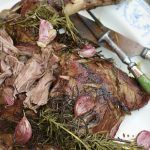I wanted to talk about our dry aging process at Barbecoa, and the impact this has on the quality and taste of the final steak that makes it onto your plate.
Dry aging is a way of storing beef that enables the moisture to evaporate and allows natural enzymes to breakdown the connective tissues. This process must take place in a refrigeration unit with a temperature between 36 degrees F and just above freezing. There should also be a good constant air flow around the beef. Our roastings are hung from hooks on a ceiling based rail system that enables good stock rotation and assists with the air flow. We also use racking to stack our sirloins and fore ribs on.
What are the pros and cons of treating beef this way?
The cons: well, first off, there is the expense; having to hold enough stock for the ideal maturation to be achieved. Then there is the weight loss, calculated to be around 30 – 35% of the particular cut of meat. You also have the extra cost of trimming the beef. With the dry aging process a dark crust forms on the outside – this must be cut off and discarded, creating more loss. So this may give you some idea why dry-aged beef is more expensive. The typical industry standard at the top end of supermarkets and butchers is aged between 21-28 days, which isn’t bad. However here at Barbecoa though we go way way beyond that figure.
So, the pros: well, firstly, tenderness and succulence is guaranteed. Then there is the concentration of the natural beefiness of the flavour. Today I will be cutting steaks that are an incredible 45 days old – yes FORTY-FIVE! Rumps, sirloins, rib-eyes, T-bones, for the restaurant and for the shop customers. I absolutely love working with such quality products, and it’s great to get positive comments from happy punters or a thumbs up from someone on their way to the office the day after you have recommended their evening meal for them.






















